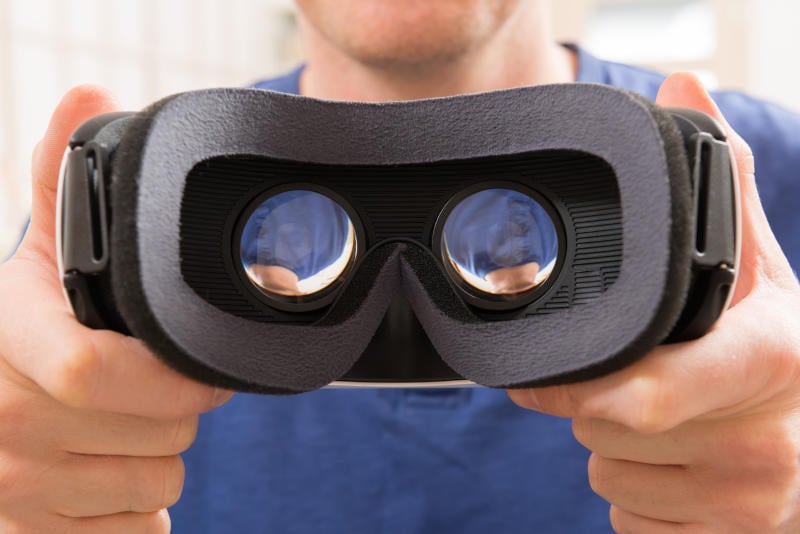CPR is a crucial skill for health care professionals and has become an invaluable addition to the medical field — and as technology evolves, so do CPR training methods. In its early days, CPR was only teachable in person. Today, though, organizations can choose between in-person, online, blended, and most recently, virtual reality (VR) CPR training.
According to Encyclopedia Britannica, VR is the “[u]se of computer modeling and simulation to enable a person to interact with an artificial three-dimensional visual or other sensory environment.” What that means for CPR, then, is that students can get hands-on training via a virtual manikin instead of having to take an in-person class.
Keep reading to learn about the future of CPR certification and how VR CPR training will help create a more capable, efficient health care system.
How Technology Is Changing CPR Training
CPR training has become more sophisticated with the help of technology. The days of waiting for an instructor to pop in a VHS tape are over. Today, you can find comprehensive online CPR training that uses interactive visuals and simulated emergencies to make the learning experience more immersive.
Smartphones are also making a difference by enabling people to learn CPR from anywhere. Apps with step-by-step guidance can enhance knowledge retention, and VR CPR training gives learners an opportunity to practice hands-on techniques using 3D simulations without having to attend an in-person class.
With that said, as technology progresses and new VR CPR training tools emerge, so do the potential challenges they pose.
VR CPR Training Tools & Challenges
Thanks to the advent of VR, CPR training has been taken to a new level. With innovative VR tools and simulation software, trainees can practice performing CPR on virtual patients and in a safe, controlled environment while instructors provide feedback and guidance in real time.
The potential for VR CPR training is immense, particularly in remote and underserved areas where access to physical training may be limited. However, just like with any emerging technology, there are challenges to overcome, such as the cost of equipment, access to technology, and ensuring that the virtual simulation accurately mirrors real-life scenarios.

There is a concern that relying too heavily on technology could lead to a lack of hands-on practice and real-life experience, and the efficacy of VR training compared to traditional methods of CPR instruction is still being studied. Nevertheless, VR tools offer an exciting opportunity to enhance CPR training and ultimately save more lives.
Instructor-Less Manikins
Instructor-less manikins for CPR training have the potential to revolutionize how we teach this vital skill. Manikins offer an affordable, scalable, and always-available option for learning proper CPR techniques.
That said, there are also potential problems to consider, such as ensuring the accuracy of the feedback and the need for hands-on instruction. Overcoming these challenges would require incorporating virtual reality simulations, ensuring access to real-life scenarios for practice, and offering personalized coaching and guidance wherever possible.
With these strategies in place, instructor-less manikins for CPR training could become an invaluable resource for anyone seeking to learn this critical life-saving skill.
CPR Watches
CPR watches are equipped with sensors that can detect the depth and frequency of chest compressions during CPR, offering real-time feedback to ensure proper technique — but some problems still need to be addressed.
For instance, some CPR watches require a smartphone to function, which may not be readily available in emergency situations. Additionally, they may not be accessible to everyone due to high costs or technological barriers.
To overcome these challenges, manufacturers would have to find ways to make CPR watches more affordable and user friendly. Also, instructors — be they online, in person, or via VR CPR training — would have to emphasize the importance of traditional CPR training methods.
VR CPR Training Today, Tomorrow & Beyond
Technology is pushing the boundaries on how we learn. Since the first mass CPR class in 1972, we’ve gone from text-based manuals and in-person training to instructor-less manikins and simulations to make proactive and comprehensive learning of CPR possible.
With careful consideration and investments in technologies like VR CPR training, the health care industry stands to experience great advancement through streamlined capabilities for teaching and implementing an essential skill for public health: resuscitation.
Contact us today to learn more about how ProTrainings can help you make getting your staff CPR certified easier and more efficient.
